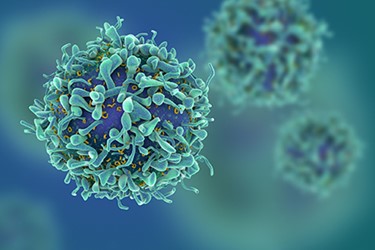Utilizing The Multiparameter Capability Of The ZE5 Cell Analyzer To Monitor T Cell Exhaustion And Effects Of Immunotherapy
By Chris Brampton, Angie Green, Kristin Lind, Laura Moriarty, and Elizabeth Dreskin Bio-Rad Laboratories, Inc.

T cell exhaustion is a hyporesponsive state of T cells characterized by sustained expression of suppressive cell surface markers, decreased effector cytokines, and impaired cytotoxicity. Within the microenvironment of tumor cells or during chronic viral infections, T cells become exhausted, resulting in ineffective tumor and pathogen targeting by the immune system. High programmed cell death protein 1 (PD-1) expression is a major driver of T cell exhaustion and can be targeted by several drugs, which can reverse exhaustion and restore T cells’ capabilities to clear viral infection and cancer cells from the body. This strategy of reawakening the immune system to fight disease is a growing field with new drugs and targets continuously being developed. The efficient monitoring of T cell surface markers, cytokines, and expression patterns is critical to the study of further immunotherapies. When working with limited patient samples, the ability to test multiple parameters simultaneously is highly valuable. Here, we successfully monitor in-depth changes to the T cell phenotype, exhaustion, and cellular subset identity markers using a 16-parameter panel developed for use with a 5-laser ZE5 Cell Analyzer. Using an in vitro model, we examined T cells before and after chronic stimulation, and in combination with a PD-1 receptor inhibitor, nivolumab.
Get unlimited access to:
Enter your credentials below to log in. Not yet a member of Drug Discovery Online? Subscribe today.
